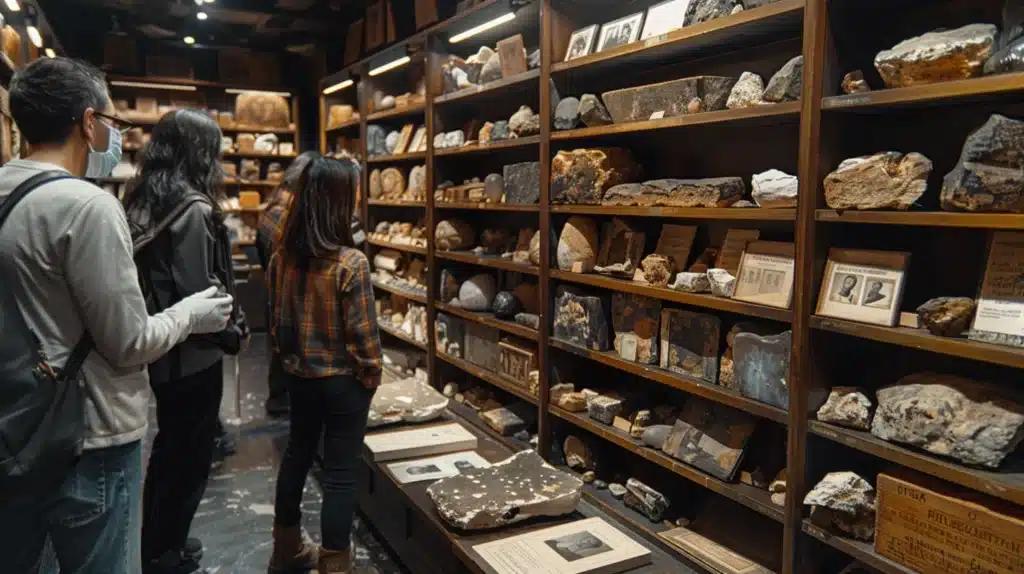Preserving the Past, Inspiring the Future: The Impact of Technology on Jewish Cultural Heritage
In an era where technology intertwines with every facet of our lives, its influence on preserving cultural heritage is both profound and inspiring. The Jewish community, with its rich history that spans millennia and continents, has found in technology a powerful ally. From the archiving of ancient documents to the virtual reconstruction of historical sites, technology is not just preserving Jewish culture; it’s revitalizing it.
The Role of Digital Archives in Jewish History Preservation
One of the most significant advancements in the preservation of Jewish history has been the development of digital archives. These repositories not only safeguard historical data but also make it accessible worldwide. Institutions like Yad Vashem in Israel are leading the way with initiatives like the New Collections Center which houses over 540,000 photos from the Holocaust period.
This monumental collection serves as a poignant reminder of the atrocities faced by Jews during the Holocaust, ensuring that such history is neither forgotten nor repeated. The digitalization efforts extend beyond photos to include diaries, letters, and artifacts that provide a comprehensive view of Jewish life before and during the Holocaust.
Technology in Restoring Artifacts
The restoration of historical artifacts is another area where technology shines. Conservators like Reut Ilan Shafik utilize advanced techniques to restore items that have deteriorated over time. For instance, in Yad Vashem’s laboratories, conservators employ chemical processes to stabilize artifacts such as film reels that are vulnerable to acid decay.
Advanced imaging technologies also allow for detailed analyses of texts that are too fragile to handle, revealing hidden inscriptions without causing any damage. These technologies ensure that even the most delicate artifacts can be studied and preserved for future generations.
Virtual Reality and Augmented Reality: Bringing History to Life
Perhaps one of the most exciting technological developments in cultural heritage preservation is the use of Virtual Reality (VR) and Augmented Reality (AR). These tools are being used to recreate historical sites and events, allowing users to experience aspects of Jewish history firsthand.
For example, virtual reality tours can transport users back in time to walk through the streets of pre-war Jewish neighborhoods or stand within ancient temples. This immersive experience not only educates but also helps users develop a deeper emotional connection to their heritage.
Educational Outreach Through Technology
Technology also plays a crucial role in educational outreach. Online platforms and interactive databases have made Jewish educational resources more accessible than ever before. Websites like JewishGen.org offer extensive databases for genealogical research, helping individuals trace their ancestry and connect with their personal and communal pasts.
Educational apps and games introduce younger audiences to their cultural heritage in a format that resonates with them, making learning both fun and impactful. By engaging with these technologies, young Jews can maintain a connection to their culture in a way that feels relevant and contemporary.
The Impact on Community Bonds
Beyond individual learning and exploration, technology fosters stronger bonds within the global Jewish community. Social media platforms and forums allow for vibrant discussions about heritage, religion, and identity that transcend geographical barriers.
Online festivals and live-streamed events unite people from across the globe who might not otherwise have the opportunity to participate. During times when physical gatherings may be challenging or impossible, these digital spaces provide essential connections.
The Future of Technology in Cultural Preservation
Looking forward, the potential for new technologies to further enhance cultural preservation is limitless. Artificial Intelligence (AI) could be used to predict and prevent deterioration of artifacts while providing new insights through data analysis.
Drones could be employed for archaeological explorations, providing views and access to areas otherwise unreachable. Meanwhile, ongoing advancements in VR and AR will continue to open up new avenues for education and engagement.
Conclusion: A Legacy Preserved
The interplay between technology and cultural heritage preservation is reshaping how communities interact with their history. For the Jewish community, these technological advancements are not merely about preserving the past; they are about building a future where history remains alive and accessible.
In this digital age, every photograph preserved, every artifact restored, and every virtual tour created contributes to a larger narrative of resilience and remembrance. As we forge ahead into an increasingly digital future, these tools will play a pivotal role in ensuring that Jewish culture remains vibrant and cherished across generations.



